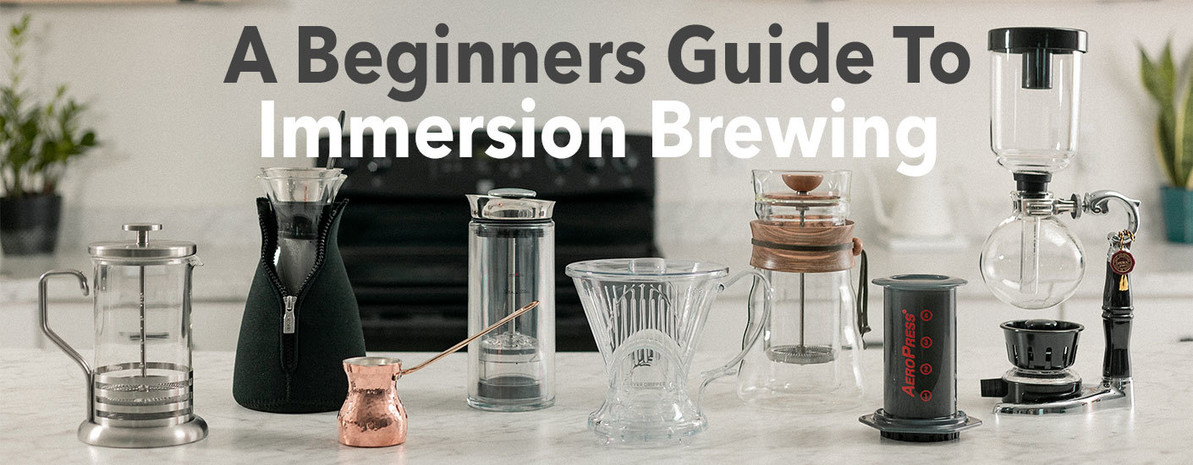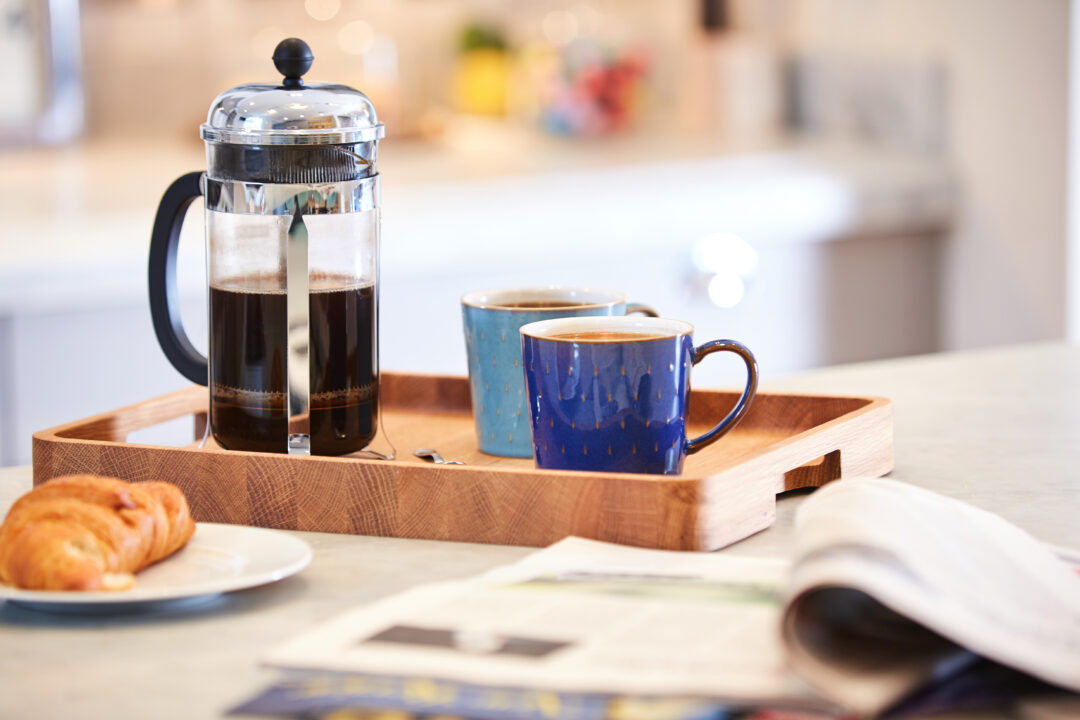Unveiling the Scientific Research Behind Different Coffee Brewing Methods and Their Advantages
Unveiling the Scientific Research Behind Different Coffee Brewing Methods and Their Advantages
Blog Article
The Science Behind Coffee Brewing: How Temperature Level and Time Affect Your Drink
Recognizing the scientific research behind coffee brewing reveals that temperature and time are not simple variables yet essential elements that dictate the beverage's flavor account and general high quality. As we check out the nuances of these components, the inquiry arises: exactly how can one effectively balance temperature level and time to achieve that best mixture?
The Chemistry of Coffee Removal
The chemistry of coffee removal delves right into the complex procedures that change raw coffee beans into the aromatic drink taken pleasure in worldwide. This transformation mainly includes the solubility of various compounds existing in the beans, which are affected by elements such as grind size, water quality, and the developing technique used.
Throughout the developing procedure, warm water acts as a solvent, extracting soluble compounds, consisting of caffeine, acids, lipids, and sugars, from the coffee grounds. Each compound adds to the flavor account, fragrance, and body of the last drink. Acids are accountable for tangy and bright notes, while oils contribute to an abundant mouthfeel.
The initial phases of brewing extract acids and sugars, leading to an enjoyable acidity, while long term removal can lead to resentment due to over-extraction of undesirable substances. Comprehending these chemical interactions is important for maximizing brewing techniques, as the equilibrium in between removal time and water temperature can substantially affect the overall top quality of the coffee.
Perfect Brewing Temperatures
Discovering the ideal brewing temperature is vital for unlocking the complete possibility of coffee tastes and scents - coffee brewing methods. Study shows that the ideal array for brewing coffee lies between 195 ° F to 205 ° F(90 ° C to 96 ° C) Within this variety, the removal procedure efficiently liquifies the desirable soluble substances in coffee beans, causing a tasty and well balanced mug
Brewing at reduced temperatures, such as listed below 195 ° F(90 ° C ), may lead to under-extraction, producing a weak and acidic mixture with muted flavors. Alternatively, developing at temperature levels surpassing 205 ° F(96 ° C) can result in over-extraction, creating a bitter and extreme taste due to the extreme dissolution of undesirable compounds, such as tannins.
In addition, the ideal brewing temperature level can differ depending on the coffee bean kind and roast level. Lighter roasts frequently profit from slightly higher temperatures to boost their intricate flavor accounts, while darker roasts may be better fit to lower temperature levels to alleviate anger.
Ultimately, keeping precision in brewing temperature levels is important for attaining a harmonious balance of tastes, guaranteeing that every mug of coffee supplies a satisfying sensory experience.
Effect of Developing Time
Developing time plays a crucial role in determining the flavor profile and general high quality of coffee. The extraction process, which influences the preference, scent, and body of the beverage, is mainly reliant on how much time the coffee premises are in contact with water. Much shorter developing times can result in under-extraction, leading to a sour or weak flavor, as not nearly enough soluble compounds are dissolved. On the other hand, long term brewing can lead to over-extraction, where unwanted substances are released, resulting in an astringent or bitter preference.
Optimal developing time varies depending upon the technique utilized and the grind size of the coffee. A French press typically requires regarding four minutes, while espresso extraction is normally completed within 25 to 30 seconds. It is necessary to calibrate brewing time in conjunction with other variables, such as water temperature level and coffee-to-water proportion, to achieve the wanted flavor profile.
Comprehending the impact of developing time allows coffee lovers to refine their brewing techniques, eventually improving the sensory experience of their cup (coffee brewing methods). With cautious interest to this variable, one can unlock the complete possibility of the coffee, revealing its special characteristics and nuances
Brewing Methods and Their Impacts

For example, techniques like French press and cold mixture permit for a much longer steeping time, resulting in a fuller body and durable flavor as a result of enhanced removal of oils and soluble solids. Alternatively, coffee developing uses high pressure and a shorter removal pop over to these guys time, creating a focused shot that stresses intense tastes and an abundant crema.
Pour-over methods, such as Chemex or V60, provide an even more regulated extraction procedure, enabling the brewer to adjust circulation rate and water distribution, which can enhance brightness and quality. Percolation techniques cycle water via the coffee grounds several times, leading to a more powerful, commonly bitter flavor.
Finally, making use of paper filters versus steel filters can additionally affect the final taste; paper filters usually generate a cleaner cup by capturing oils and fine fragments, while metal filters enable more oils to travel through, contributing to a fuller mouthfeel - coffee brewing methods. Comprehending these subtleties can raise the coffee experience significantly
Tips for Developing Your Mixture
A well-executed mixture can transform even the most basic coffee into an impressive experience. To achieve this, focus to detail is crucial. Begin with top notch, newly roasted beans, as their taste profile reduces gradually. Grind the beans right before brewing to optimize quality, guaranteeing the grind size matches your brewing technique-- coarser for French press and finer for coffee.
Water high quality plays a vital role; use filteringed system water without pollutants. The excellent brewing temperature varies in between 195 ° F and 205 ° F(90 ° C to 96 ° C ) Too hot can blister the coffee, while as well cool might under-extract flavors.
Timing is just as essential. For immersion methods, steeping for three to five minutes is ideal, whereas drip techniques generally take about five mins. reference Explore brew times to find your recommended strength.

Verdict
In summary, the elaborate connection in between temperature level and time is critical in the coffee developing process. Complying with optimal developing temperatures between 195 ° F and 205 ° F, together with accurate timing click here for more info customized to every approach, guarantees the desired flavor account is accomplished. Comprehending these clinical concepts equips people to refine their brewing strategies, eventually leading to an extra well balanced and satisfying coffee experience. Mastery of these factors is important for any type of coffee lover looking for quality in their beverage.
Comprehending the scientific research behind coffee brewing discloses that temperature level and time are not mere variables however pivotal components that determine the beverage's flavor profile and overall top quality. Understanding these chemical interactions is important for optimizing developing techniques, as the equilibrium between removal time and water temperature level can considerably influence the general quality of the coffee.Developing time plays a pivotal role in determining the taste account and overall quality of coffee. By focusing on these elements-- bean quality, grind dimension, water temperature level, soaking time, and ratio-- you can boost your coffee developing procedure, resulting in a continually remarkable mug.
In recap, the detailed partnership in between temperature level and time is vital in the coffee developing procedure.
Report this page